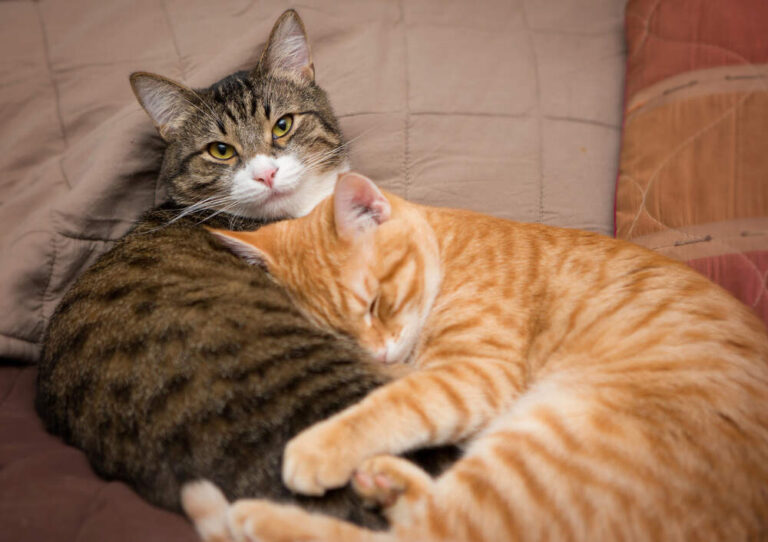Are your cats constantly fighting and causing chaos in your home? Don’t worry, there are ways to help them live harmoniously together. Here are some tips and techniques to get your cats to get along and create a peaceful environment in your household.
- Gradual Introduction: When introducing a new cat to your resident cat, it’s important to do it slowly and in a controlled manner. Start by keeping them in separate rooms and gradually allow supervised interactions. This helps them get used to each other’s scent and presence without feeling threatened.
- Provide Separate Resources: Cats are territorial creatures, so it’s crucial to provide separate resources for each cat. This includes food bowls, litter boxes, and resting areas. Having their own space reduces competition and potential conflicts.
- Positive Reinforcement: Reward good behavior and positive interactions between your cats. Use treats, praise, and playtime to encourage them to associate each other’s presence with positive experiences. This helps them build a positive bond.
- Environmental Enrichment: Keep your cats mentally and physically stimulated with toys, scratching posts, and climbing structures. This helps alleviate boredom and reduces the likelihood of aggressive behavior.
By following these tips and techniques, you can help your cats live harmoniously together in the same household. Remember, patience and consistency are key. With time, your cats can become the best of friends and bring joy to your home.
Understanding Cat Behavior

One key instinct is their territorial nature. Cats have a strong need to establish and defend their territory, which can lead to conflicts when introducing them to new feline companions. It’s important to provide each cat with their own space, such as separate feeding areas and litter boxes, to help minimize potential disputes.
Additionally, cats communicate through various behaviors and body language. They use scent marking, vocalizations, and body postures to convey their intentions and emotions. Understanding these signals can help you interpret their interactions and prevent misunderstandings or potential fights.
By recognizing and respecting their natural instincts and behaviors, you can create a harmonious environment for your cats. Gradual introductions, providing individual spaces, and observing their communication cues are essential steps in helping cats live together peacefully.
Introducing Cats to Each Other

One effective strategy is to start by keeping the new cat in a separate room for a few days. This allows the cats to become familiar with each other’s scent without direct contact. You can swap bedding or use a cloth to rub each cat, then place it near the other cat’s sleeping area.
Once the cats seem comfortable with each other’s scent, you can start supervised face-to-face interactions. Use a baby gate or a screen door to separate them, allowing them to see and smell each other without the risk of physical contact. Gradually increase the time they spend together, always monitoring their behavior for signs of aggression or stress.
It’s important to provide plenty of resources for each cat, such as food bowls, litter boxes, and resting areas. This helps prevent competition and territorial disputes. Additionally, positive reinforcement through treats and praise can be used to reward calm and friendly behavior.
Remember, every cat is unique, and the introduction process may take time. Be patient and allow the cats to set their own pace. With careful planning and gradual introductions, you can help your cats form a harmonious bond and create a peaceful household.
Frequently Asked Questions
-
- Q: How long does it usually take for cats to get along?
A: The time it takes for cats to get along can vary depending on their individual personalities and past experiences. It may take a few weeks or even months for cats to fully adjust to each other’s presence. Patience and gradual introductions are key to fostering positive relationships between cats.
-
- Q: What should I do if my cats are not getting along?
A: If your cats are not getting along, it’s important to intervene and address the issue. Start by providing separate spaces for each cat with their own food, water, litter boxes, and hiding spots. Gradually reintroduce them using scent swapping techniques and supervised interactions. If the conflict persists, consult with a veterinarian or a professional animal behaviorist for further guidance.
-
- Q: Can I use treats or toys to encourage positive interactions between cats?
A: Yes, using treats or toys can be a helpful tool in encouraging positive interactions between cats. You can use treats to reward calm behavior and provide toys that allow them to engage in interactive play together. However, it’s important to monitor their interactions and ensure that they do not become possessive or aggressive over the resources.
-
- Q: Should I punish my cats if they fight?
A: Punishing cats for fighting is not recommended as it can escalate the aggression and create a negative association. Instead, focus on providing a safe and calm environment for them. Separate them if necessary and give them time to cool down. Consult with a professional if the fighting continues.
-
- Q: Can spaying or neutering help with cats getting along?
A: Yes, spaying or neutering your cats can help reduce territorial behaviors and aggression, making it easier for them to get along. It is recommended to have your cats spayed or neutered before introducing them to each other.
